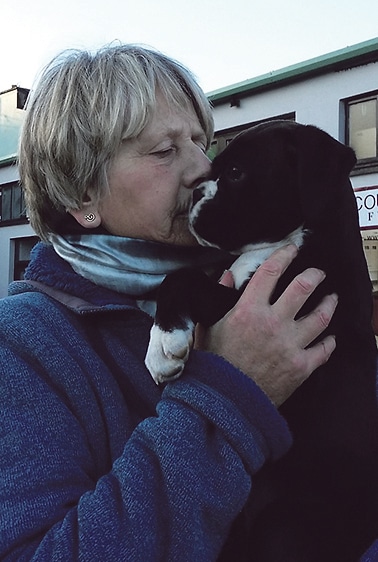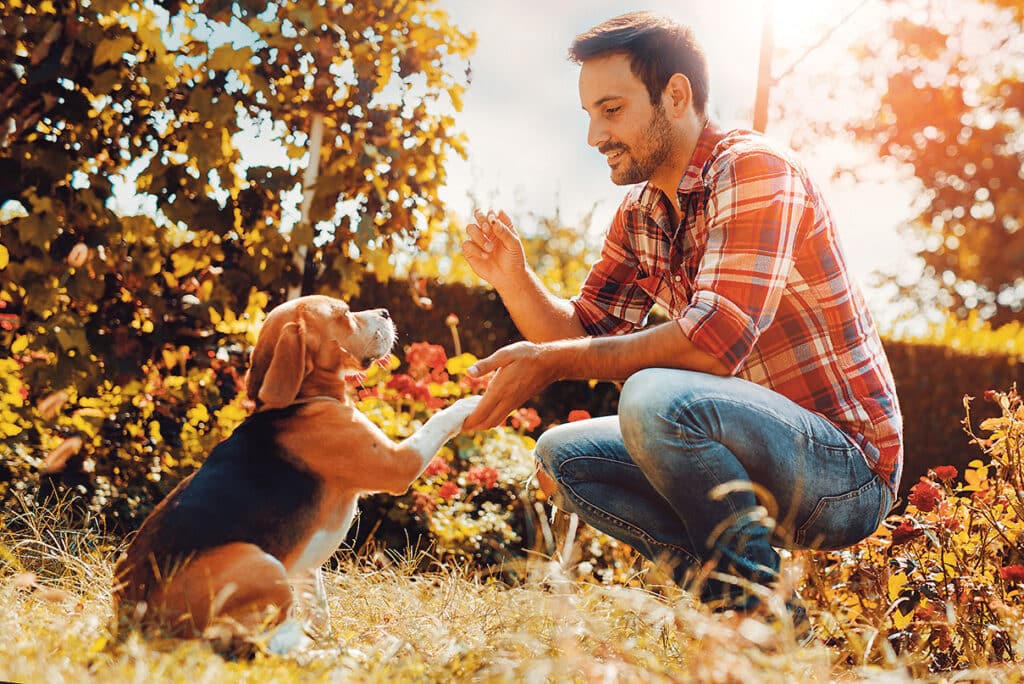
Liz Mahony is an experienced Dog Trainer and Holistic Therapist for all animals. In her monthly column, Liz aims to promote mutual respect between carer and dog. Contact Liz at
corkdogtrainingclasses.com
Throughout my life I’ve been a watcher. It comes naturally because I’m fascinated by the interactions of people and animals. As a dog trainer, this ability to read a dog’s signals has been invaluable. And I try to teach it in some measure to clients. Once you are watching your dog’s signals and interacting with him, you can learn so much.

Stay connected: There are so many distractions in life these days that it’s hard to be tuned in to your dog all of the time. However, if you are taking your dog for a walk, playing with him or just sitting down beside him, why not make a point of concentrating solely on him? It needn’t be for too long but we all know and appreciate the importance of ‘quality time’ with each other. Our dogs love our undivided attention too. And you’d be surprised how much you learn about your dog during this time. First and foremost, I would advocate ditching the mobile phone during that period so you can really concentrate.
Observe: When you get your puppy or older dog, it’s important to find out what sort of character you have. You observe his interactions with you, other people, other dogs, everyday instances such as the postman arriving and leaving, and so on. You can begin to get a picture of his true character. You also learn what are his negative triggers and what stimulates him.
Watching his different reactions, you soon learn to read his signals. Here’s an example. One of my previous Boxers, Nutmeg, was friendly but aloof. In other words, she didn’t approach visitors or strange dogs until she’d sussed them. Sometimes, she would go up and give a measured acceptance of their presence. Other times, she would remain at a distance and watch proceedings. She was an extremely good judge of character!
My young Boxer, Saffron, is the total opposite. She’s particularly nosy and wants to meet and greet everyone. In other words, she has little discretion. Partly, it’s due to her youth but it’s also merely that she’s gregarious.
Whereas Nutmeg wouldn’t dream of going off with anyone, Saffron would unfortunately follow any Tom, Dick or Harry!
I learnt their different characters just by reading their signals. Nutmeg would sit or stand at a distance and you could almost see her brain ticking over as she read each situation. Saffron just jumps in with excitement and sometimes it’s difficult to connect with her because her brain isn’t engaged!
But the object of the exercise is to get to know your dog inside out.
Teach your dog to focus on you. When I’m training a dog for a client, I show them what they can expect from their dog. And the first thing I ask is for the dog to focus on me while I teach him basic obedience.
Most times it’s easy to teach the dog to make eye contact and reward him with a treat. Occasionally, a dog has a difficulty with this. That could be because he’s come from a background of abuse and it was safer to keep his eyes on the ground.
Sometimes, a dog is just naturally shy and needs gentle encouragement.
But, most of the time a dog is eager to do as you ask, especially when a treat and praise follow immediately after.
Teach your dog to use his brain: A thinking dog learns all the basic obedience commands generally with ease. He’s grounded and a willing pupil. If you ‘stay connected’ with him in the training even for a short spell of just five minutes, make the session enjoyable and literally rewarding, you will be teaching your dog basic life skills.
Play games. Most dogs seem to be born with a sense of fun. If you play with your dog, not only are you engaging his brain, and giving him some form of exercise, it is a great way of bonding with him.
I often suggest to clients that instead of just mindlessly throwing a ball for their dog, they teach him to wait patiently while the ball is hidden. Then they encourage him to find it. They stay with him while he looks and help him, if needed. Their dog will enjoy the thrill of the search and then the ultimate success when he finds it. One simple game teaches him the stay command and self control, to use his brain and his nose, and the joy of finding it all by himself but with their input and encouragement.
As I said, we have many draws on our attention every day but devoting time with your dog for special activities: walking, playing, training, being in the moment with him will deepen that special relationship between you and your canine companion.


